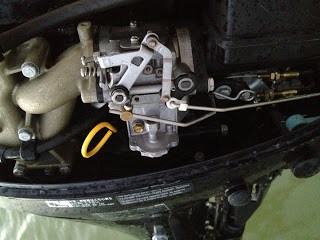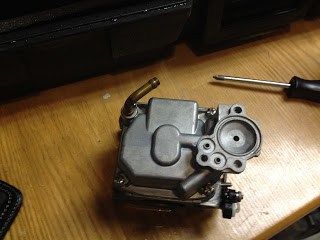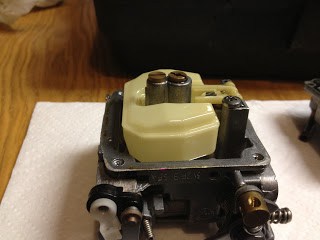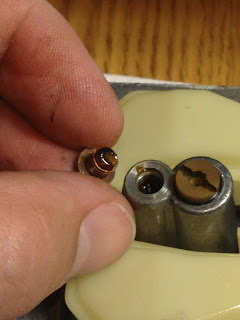 My Tohatsu 9.8 outboard stopped starting last month. This was very unusual because that is a great motor, and it has always started on the first or second pull since I bought it 3 years ago. I decided to blog about the repair in the hope it helps someone with a similar problem. The night I finally figure it out, there was this incredible rainbow that ended right on my dock. Clearly, this was a sign. (I just hope my dockmates are ok with me bringing animals 2 by 2 down to the slip…)
My Tohatsu 9.8 outboard stopped starting last month. This was very unusual because that is a great motor, and it has always started on the first or second pull since I bought it 3 years ago. I decided to blog about the repair in the hope it helps someone with a similar problem. The night I finally figure it out, there was this incredible rainbow that ended right on my dock. Clearly, this was a sign. (I just hope my dockmates are ok with me bringing animals 2 by 2 down to the slip…)
 So I have been troubleshooting the problem. The motor will turn over, but won’t start. First thing was to swap out the fuel tank and hose for a spare I had laying around. The other hose was a little old and I wondered if it had some air leaks in it. Or perhaps the gas in the tank was too old. But switching to the other tank and hose did not solve the problem.
So I have been troubleshooting the problem. The motor will turn over, but won’t start. First thing was to swap out the fuel tank and hose for a spare I had laying around. The other hose was a little old and I wondered if it had some air leaks in it. Or perhaps the gas in the tank was too old. But switching to the other tank and hose did not solve the problem. Next I pulled the spark plug out and set it safely aside. I stuck my thumb over the spark plug hole and turned the engine over again. I could feel the sucking on my thumb, so it was not a compression problem.
Next I pulled the spark plug out and set it safely aside. I stuck my thumb over the spark plug hole and turned the engine over again. I could feel the sucking on my thumb, so it was not a compression problem. So fuel was getting to the carburetor, but not into the cylinder. I pulled the carburetor off (it was very easy, just undo the fuel hose, the two linkage rods, and then remove two long bolts that connect the air intake to the carburetor to the engine block.) One poster on the catalina 25 association forums mentioned that he was able to remove the carburetor with the boat in the water. This is risky, but anything that gets dropped overboard become the unretrievable property of one Davy Jones. But I decided to try it anyway.
So fuel was getting to the carburetor, but not into the cylinder. I pulled the carburetor off (it was very easy, just undo the fuel hose, the two linkage rods, and then remove two long bolts that connect the air intake to the carburetor to the engine block.) One poster on the catalina 25 association forums mentioned that he was able to remove the carburetor with the boat in the water. This is risky, but anything that gets dropped overboard become the unretrievable property of one Davy Jones. But I decided to try it anyway. Sure enough, the idle speed jet was covered with a thick varnish of residual fuel. I cut some copper strands from various pieces of electrical wire and probed all the holes in the jets until they were clear. Then I dropped the jets and screws in the carb cleaner for two hours, agitating the parts every half an hour.
Sure enough, the idle speed jet was covered with a thick varnish of residual fuel. I cut some copper strands from various pieces of electrical wire and probed all the holes in the jets until they were clear. Then I dropped the jets and screws in the carb cleaner for two hours, agitating the parts every half an hour.